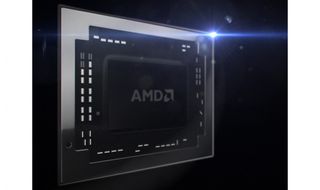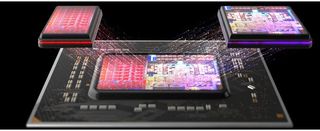AMD's Carrizo Chip Looks to Boost Performance, Battery Life

Between online gaming, video streaming and managing multimedia libraries, you're demanding more from even midrange laptops these days. And AMD doesn't think that most chips powering these machines are up to the task
That's the thinking behind the 6th Generation A-Series Processor unveiled by AMD today (June 2). Codenamed Carrizo, the Accelerated Processing Unit, or APU, promises twice the gaming performance of competing platforms while doubling the battery life of AMD's previous generation of notebook chips.
MORE: Best Laptops
With Carrizo, AMD is targeting mainstream notebooks in the $400 to $700 range. Two out of every five laptops purchased fall in that category, AMD says, making it the largest segment of the laptop market. People buying these midrange notebooks want to play demanding online games, watch streaming video, and manage their photos and videos -- tasks that should be within the capabilities of those devices but often are not. AMD contends that either pushes people to pay up for more expensive hardware or resign themselves to an unsatisfying experience.
"We think the notebook is the segment to get right," said Jason Banta, director of product management at AMD. "We think our competition has gotten it wrong."
AMD hopes to get it right by equipping its 6th Generation A-Series Processor with High Efficiency Video Coding (HEVC) hardware decode support; the chip maker says its Carrizo APU will be the first to offer such support for notebooks. HVEC support will allow notebooks powered by the latest A-Series Processor to offer smoother, uninterrupted video playback. It can also deliver 4K video to your laptop.
To prove its point at a press briefing unveiling its new chip, AMD set up a pair of notebooks, one powered by an Intel Core i5 processor and the other with the Carrizo APU, running 4K video on continuous playback. Video on the Core i5 machine looked choppy, almost like still images, while the Carrizo-powered notebook played back the video smoothly.
Stay in the know with Laptop Mag
Get our in-depth reviews, helpful tips, great deals, and the biggest news stories delivered to your inbox.
"HEVC on AMD takes a video experience from unwatchable to something you can actually enjoy," AMD product manager Scott Stankard said.
The latest A-Series Processor will be the first to fully support Heterogeneous Systems Architecture (HSA), a processor design that allows both the CPU and integrated graphics to share memory for speeding up tasks in a power-efficient way. Full HSA support enables applications like AMD Looking Glass, a multimedia management tool that can use facial recognition to search for specific people in your video collection. "You try to do that just on a CPU, it's going to take a while," Stankard said. "But use HSA, and it's faster."

The 6th Generation A-Series Processor features up to 12 compute cores -- four CPUS and eight GPUs. It's ready for Windows 10, the next version of Microsoft's operating system due at the end of July, and supports DirectX 12. AMD says the new processor is also the first to APU to suport ARM TrustZone that walls off sensitive data.
Apart from these features, though, the big selling point for this latest generation of AMD chips will be its energy efficiency. AMD says you'll be able to play twice as long when your notebook is unplugged with the new APU as you could with its predecessor. You'll also be able to watch more videos -- 8.3 hours of 1080p movies on a 50W Battery with the 6th Generation Processor compared to 3.3 hours for the previous APU.
AMD says its 6th Generation A-Series Processor should start appearing in notebooks from top manufacturers this month, though it didn't reveal which specific laptops would feature the new chip when previewing Carrizo for reporters.
AMD is unveiling its latest generation of APUs at the same time that rival chip maker Intel rolled out new Broadwell H CPUs aimed at large gaming notebooks as well as desktop machines.
